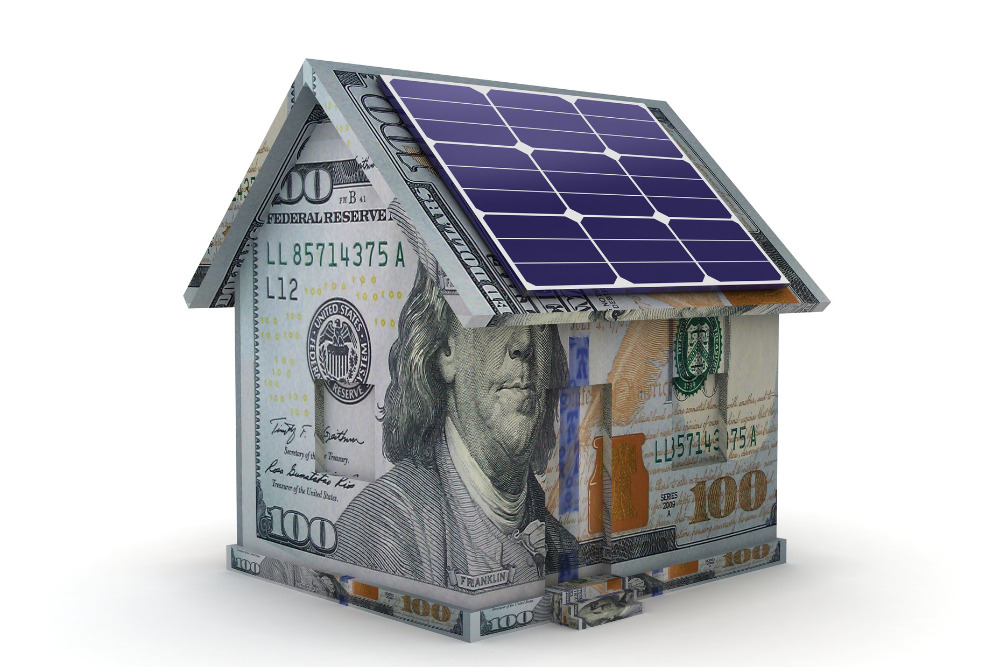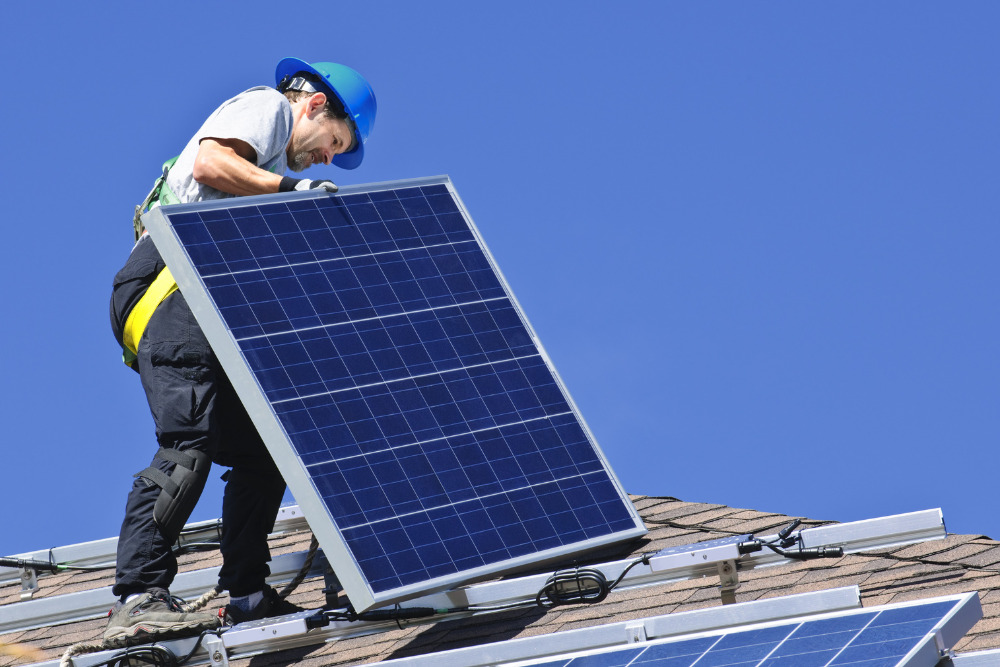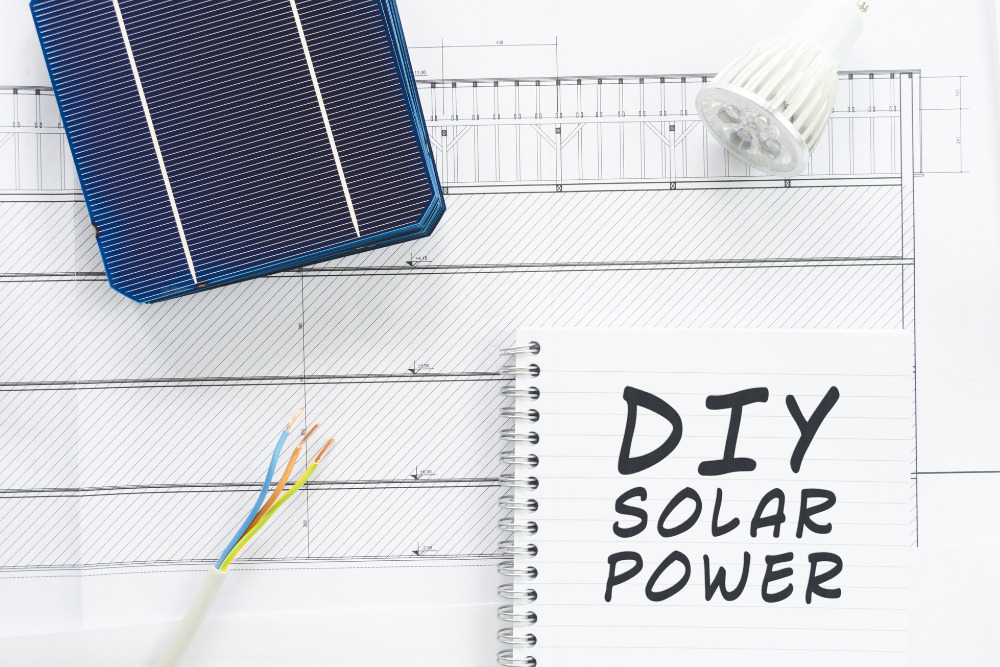
The national average cost of solar panels for residential use is $3-$5 per watt, which means a price range of $18,000 to $30,000 for a typical 6 kW system. Of that, the average price of labor per watt for installation is about 50 cents, although this varies by state and depends on several other factors.
Factors that influence the cost of installing solar panels include the size and type of the system, location, and any additional equipment or permits required.
When evaluating the cost of solar panel installation, homeowners should consider the long-term benefits, such as reduced electricity bills and potential tax incentives, that will reduce the overall cost of solar panel installation, shorten your payback period, and increase your home value.
DIY solar installation can eliminate the labor costs, though it is a major undertaking that requires a specific skill set.
How Much Does It Cost To Install Solar Panels?
The average price of labor per watt in the U.S. is about 50 cents, but it can vary significantly by location. The total cost of a residential solar energy system is $3-$5 per watt after everything is factored in.
Other factors that influence the overall cost include the size and type of the system, additional equipment, permits, and any necessary electrical upgrades.
Any homeowner looking to invest in solar power should get quotes from multiple solar installation companies and consider factors like the solar company’s warranty, reputation, and quality of components to make an informed decision.
What Affects Solar Installation Cost?
Several factors affect the cost of residential solar panel installation:
System
The solar panel system size and capacity directly impact the installation cost. Larger systems with higher energy production capabilities generally cost more to install.
Location
The geographic location plays a role in the installation cost. Factors such as local weather conditions, sunlight intensity, and shading affect the efficiency and installation requirements, which impact the system cost.
Roof
The type and condition of the roof where the solar panels will be installed. Complex roof designs, like ones with multiple angles or limited space, may require additional labor and equipment, or custom-sized thin-film panels, which can increase the installation costs.
Equipment
The quality and type of solar panels, inverter, solar battery, and other equipment you choose influence the installation cost. High-end, more efficient monocrystalline panels are more expensive than polycrystalline panels.
Permits
Obtaining permits and meeting regulatory guidelines add to the overall cost. Costs associated with permits, inspections, and interconnection fees vary depending on local utility regulations and requirements.
Labor
Labor costs vary depending on the region, contractor rates, and installation complexity. Additional factors like ground-mounted versus rooftop installation, wiring distance, and accessibility affect labor costs.

Electrical
Electrical upgrades required to accommodate the solar system. Upgrading the electrical panel, wiring, or metering equipment increases the installation cost.
Incentives
Government incentives, tax credits, and utility rebates offset the overall installation cost. These incentives vary by location and significantly reduce upfront expenses and help homeowners achieve a return on investment in a shorter time. If your energy usage is lower than the amount of power your panels produce, you can use net metering to sell excess energy back to the utility company to save even more money.
How Much Can You Save By Installing Your Own Solar Panels?
Installing your own solar panels, also known as DIY solar installation, can potentially save you money compared to hiring a professional installer. In general, you can expect to save between 10% and 20% by installing your own panels.
However, the energy cost savings depends on several factors:
Installing the solar panels yourself eliminates the labor costs hiring a professional installer entails. This leads to significant savings, as labor costs constitute a substantial portion of the total installation cost.
DIY solar installation requires a certain level of skill and knowledge. If you possess the necessary expertise and have experience with electrical and construction work, you can avoid hiring professionals. You will also need to be able to assess your energy needs and determine the number of solar panels needed to power your home.
DIY solar installation often requires purchasing or renting specialized tools and equipment. While these items will have upfront costs, they are more cost-effective in the long run if you plan to install multiple solar systems or engage in other DIY projects.
When you install your own solar panels, you may not have access to the same warranties, support, and service packages that professional installers and panel manufacturers provide. If any issues arise with the system, you will be responsible for troubleshooting and resolving them, which could incur additional costs and hassle.

How Much Do The Components Needed For Solar Panel Installation Cost?
The cost of the components needed for solar panel installation depends on the system size, the component quality, and installation requirements. Here are the approximate price ranges for some key components:
- Panel Cost: The cost of solar panels depends on their efficiency, brand, and capacity. Solar panels range from $0.90 to $1.50 per watt; for example, a 300-watt solar panel costs around $270 to $450.
- Inverter Cost: Inverters convert the solar panels' direct current (DC) into usable alternating current (AC) electricity. The cost of inverters varies based on their capacity and type (string inverters, microinverters, or power optimizers). On average, inverters range from $0.10 to $0.30 per watt of the system capacity.
- Installation Component Costs: Racking and mounting systems attach the solar panels to the roof or ground. The cost of racking and mounting systems depends on the type of installation and the system complexity. On average, racking and mounting systems cost from $0.10 to $0.30 per watt.
- Wiring Costs: Wiring, connectors, and conduits are necessary for connecting solar panels, inverters, and other system components. The cost depends on the system size and complexity. On average, these components range from $0.05 to $0.15 per watt.
- Electrical Costs: Electrical components, such as circuit breakers, disconnect switches, and meters, range from $0.05 to $0.15 per watt.
How To Pay For Solar Panel Installation
There are several ways to pay for solar panel installation:
Cash
Paying for solar panel installation upfront with cash is the most straightforward method. You avoid interest charges and own the system outright by paying in full. While it requires a significant upfront investment, it provides long-term savings through reduced or eliminated energy bills.
Solar Loans
Many financial institutions offer solar loans specifically designed for financing solar panel installations. Solar loans can be secured or unsecured, and repayment terms can vary. While many factors affect the cost of solar, in most cases your monthly payment will be lower than your previous utility bill.
Solar Lease
With a solar lease, you essentially rent the solar power system from a solar company. The company installs and maintains the system, and you pay a fixed monthly lease payment. While you may not own the system, you can benefit from reduced electricity costs.
PPA
Power purchase agreements (PPAs) are similar to solar leases but involve purchasing the electricity generated by the solar panels instead of leasing them. You enter into an agreement with a solar provider to buy the electricity at a predetermined rate, typically lower than the local electricity rate. The provider installs, owns, and maintains the system.
Incentives
There may be various government solar incentives, federal solar tax credits, solar investment tax credits (ITCs), grants, and rebates available to help offset the total cost of solar panel installation. There may also be local incentives that significantly reduce upfront expenses. Research federal, state, and local programs to identify potential financial assistance options.
A few examples of incentives include:
- California Solar Initiative (CSI), the California Solar Initiative Thermal Program (CSI-Thermal), and property tax exclusion.
- Arizona Solar Energy Credit, a state tax credit that allows homeowners to claim a percentage of the cost of their solar panel system installation as a credit against their state income taxes.
- Property Tax Exemption for Residential Renewable Energy Property in Florida, which exempts the added value of a solar energy system from property taxes, reducing the overall tax burden for solar panel installations.
- Solar Energy Systems Tax Abatement in Nevada, which provides a partial property tax abatement for the assessed value of solar energy systems installed on residential, commercial, and industrial properties, reducing the tax liability associated with solar panel installations.
You should consult with solar installers, financial institutions, and tax professionals to understand the financing options best suited to your financial situation and goals.


